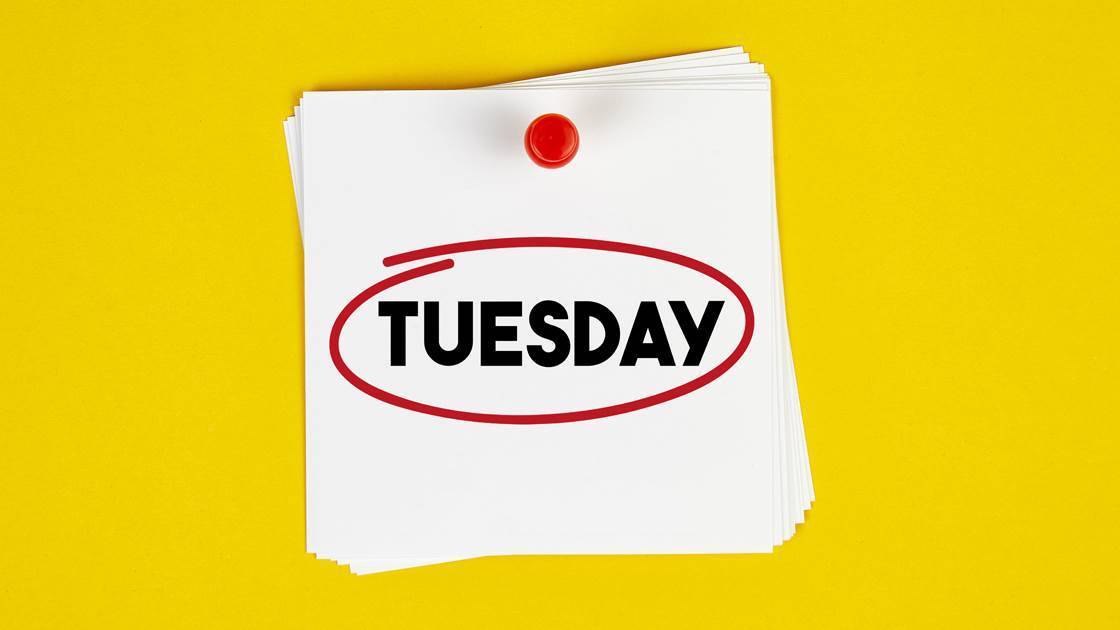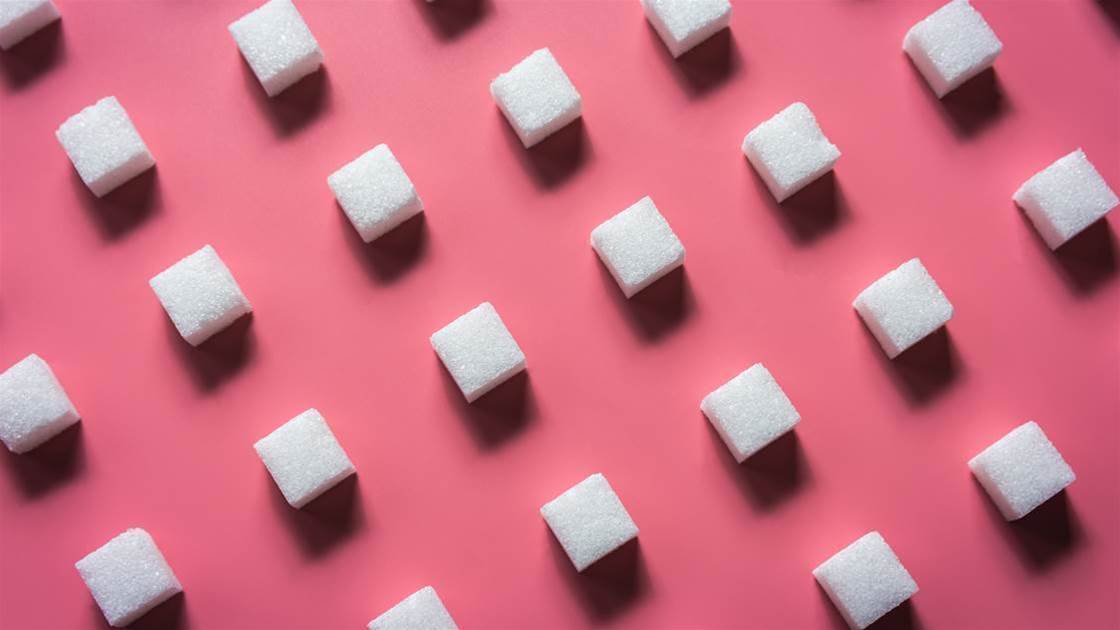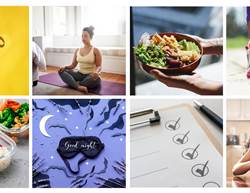Even if you’re not gobbling biscuits every night, you probably still have too much sugar in your diet. To help give sugar the boot, try this seven day plan by dietitian Brooke Alpert, to break your sugar addiction for good. Here’s how to get started.







Nix the snacking sweets.
Start off by ditching the brownies, the office lolly stash, and your coworker’s (stale) birthday cake. And yes, that low-fat blueberry muffin and the “nutritious” energy bar in your purse have got to go too. It’s an easy place to start since the sugar in sweets is easy to spot. Plus, you’ll avoid a tonne of unnecessary kilojoules while you’re at it. When you feel your willpower sliding, addressing what’s driving your sugar craving can set you up for success, says fatigue expert Dr Jacob Teitelbaum. His top three contenders:
1. You’re having PMS or are in perimenopause. Fluctuating hormones can trigger sugar cravings. If this is the case, try eating edamame, since soy contains isoflavones that mimic oestrogen in the body. If that doesn’t cut sugar cravings, go for nature’s sweet treats - a banana, a handful of berries, or two squares of dark chocolate.
2. Your blood sugar is too low. You may have skipped meals or you’re not eating enough blood-sugar steadying protein. Pair a sugary snack with a protein like mixed nuts. The healthy fats in the nuts slow absorption of the fruit’s natural sugars, so you get back into balance and cravings stop.
3. You’re tired. As in, you’re short on sleep. Instead of reaching for something sugary to boost your energy, caffeinate with tea, which has a host of health benefits.
Stop adding sugar to anything.
“Any time you would physically add sugar or sweetener, admit it to yourself - and then omit it,” says Alpert. And cap your use of natural sweeteners like agave or honey, since your body handles those the same way it does the sweet stuff. Eat your porridge without brown sugar, and take your coffee with a shake of cinnamon. Artificial sugars are leaving your diet today too. “They’re sweeter than sugar, and your body still responds with the same hormonal cascade, as if it is regular sugar,” says Alpert. “That’s why they don’t help you lose weight.” Instead, get your sweet fix in more creative ways.
1. Add vanilla extract. While it’s not actually sweet, vanilla reminds us of dessert. Shake a few drops in tea, yoghurt, porridge, nut butters, or smoothies.
2. Try toasted coconut. These flakes are naturally sweet and add nuttiness and crunch to breakfast. Opt for the large flakes, since more surface area means more flavour.
3. Caramelise onions. If you’re making tomato sauce or soup, caramelise the onions in the recipe instead of sautéing them, so their natural sweetness will shine.
4. Create contrast with salt. A dash of salt can intensify sweetness. Try it on naturally sweet foods, like corn, pumpkin soup, or sliced fruit.
Give up sugary drinks.
Most people can’t just drop a bad habit - they replace it. Psychologist Dr James Claiborn suggests opting for beverage substitutes that clash with the behaviour you’re changing. If your soft drink craving is a caffeine thing, switch to unsweetened coffee, tea, or dark chocolate. If stepping out for an afternoon latte is all about boredom, walk over to a coworker’s office for a midday chat instead.
Go plain.
Start reading food labels like it’s your job. Swap flavoured yoghurt or almond milk for the plain versions. Some flavoured fruit yoghurts pack nearly 6 teaspoons of added sugar into their tiny containers, which is nearly a full day’s worth. Sweeten your favourite foods with whole fruit, instead. And be on the lookout: Dressings, pasta sauce, crackers, peanut butter, and soups are all common sources of hidden sugar too.
Kick out refined grains.
“White flour, white rice, and white bread are basically just sugar,” says Alpert. In fact, you might not think you have a sweet tooth, but if you’re eating toast and pasta on the regular, you’re probably fooling yourself. “Pizza is basically dessert. Your body consumes it just like a slice of cake,” she says. The fix: Eat carbs, but make them whole grain. Brown rice, wholegrain bread, and quinoa are your friends.
Refined grains: Eat rarely. Processed grains like pasta, cookies, and white bread have been stripped of fibre and antioxidants. They speed through your gut, making you hungry right away. Have no more than two handfuls of refined grains a day.
Whole grains: Eat in moderation. Since it takes your body more energy to turn whole grains like brown rice and quinoa into energy, your body can’t quickly process them like their refined counterparts. Meaning: greater satiety, fewer cravings. Eat up to three servings a day of 100% whole grains.
Starches: Eat your fill. Research reveals a welcome twist on this group of foods: It’s not carbs like corn or potatoes that make us fat, but how much they are processed (fried in oil vs. baked). Don’t be afraid to put potatoes, corn, or bananas on your plate. All contain resistant starch that may act like fibre, slowing digestion and increasing kilojoule burn.
Legumes: Eat your fill. They should be your go-to carbs. One analysis found that people felt 31% fuller after eating about 1 cup of legumes a day. Try swapping ¼ cup cooked beans for 30g ground beef in burgers. Then work lentils, peanuts, and chickpeas into your regular meals.
Lose the booze.
If your evening routine involves sipping a few drinks, it may be time to cut back. “Red wine may have health benefits, but alcohol turns to sugar in our body,” says Alpert. If you decide to have a drink, stick to light beer, wine, or a shot of spirits (vodka, gin, rum, Scotch, bourbon) sans mixer. Most mixers - even tonic water - have piles of added sugar. Limit your drinks to two per week.
Measure your fruit.
Fructose, fruit’s built-in sugar, makes a pit stop in your liver, a diversion that helps prevent spikes in blood sugar levels. Whole fruit also packs fibre, vitamins, and water that keep you feeling full. However, “it’s possible to over-fruit yourself and choose those that are high in sugar,” says Alpert. She recommends capping your consumption at one to two servings a day, and choosing options that naturally fall on the lower end of the sweet spectrum, like apples, berries, and citrus fruit.

.jpg&h=90&w=90&c=1&s=1)







